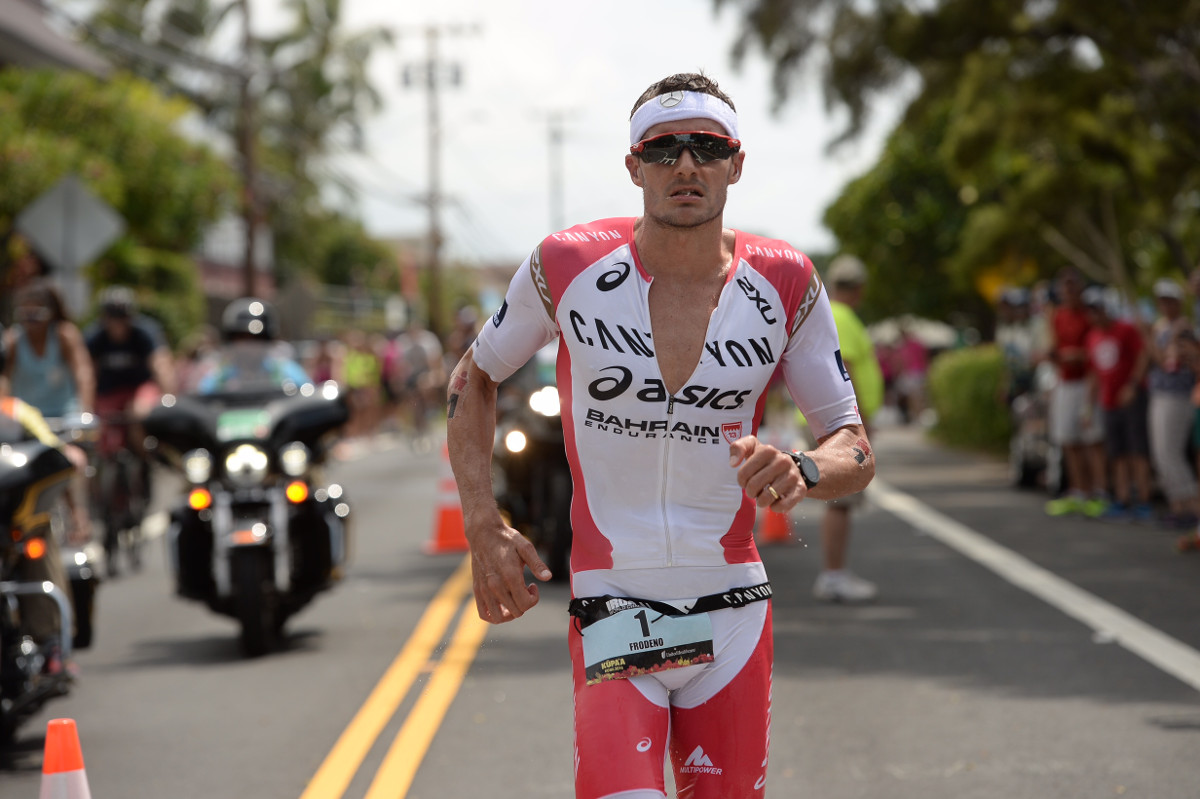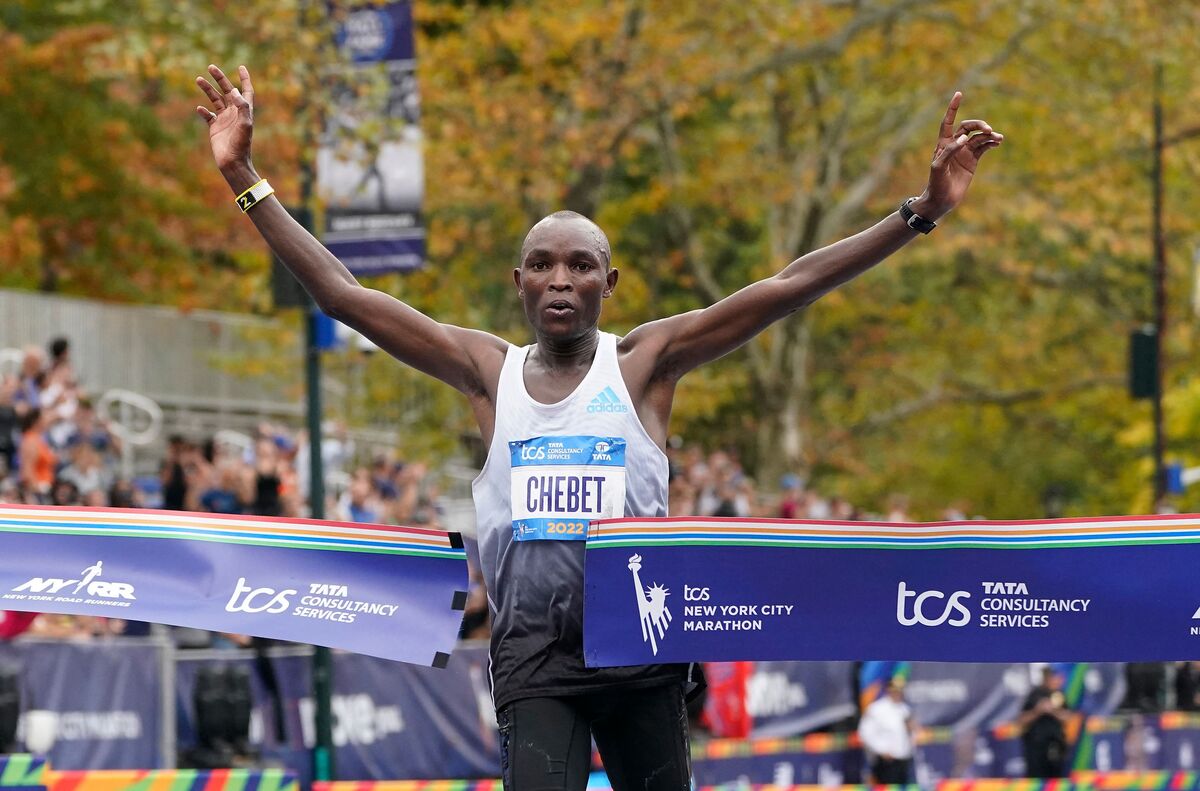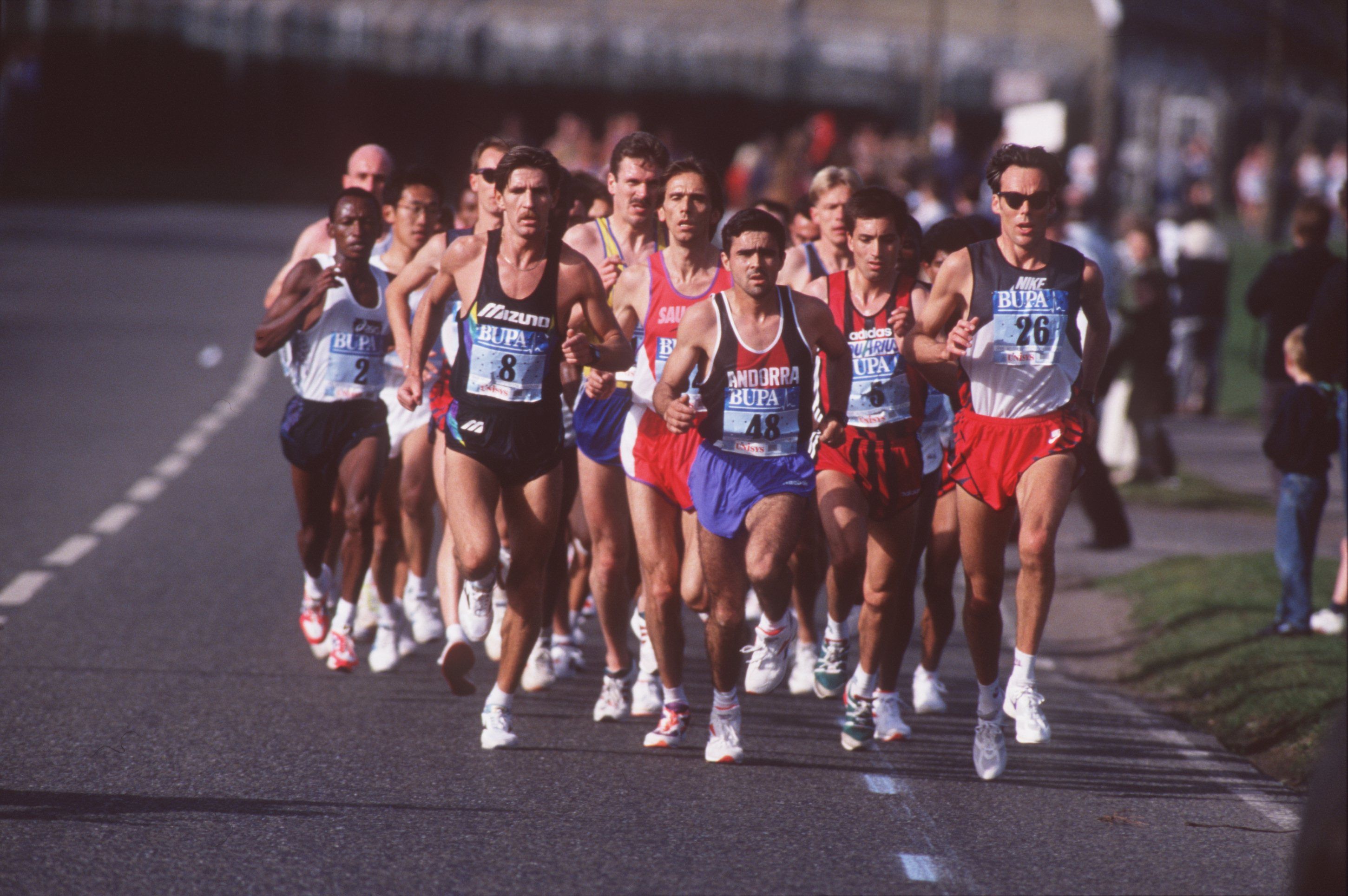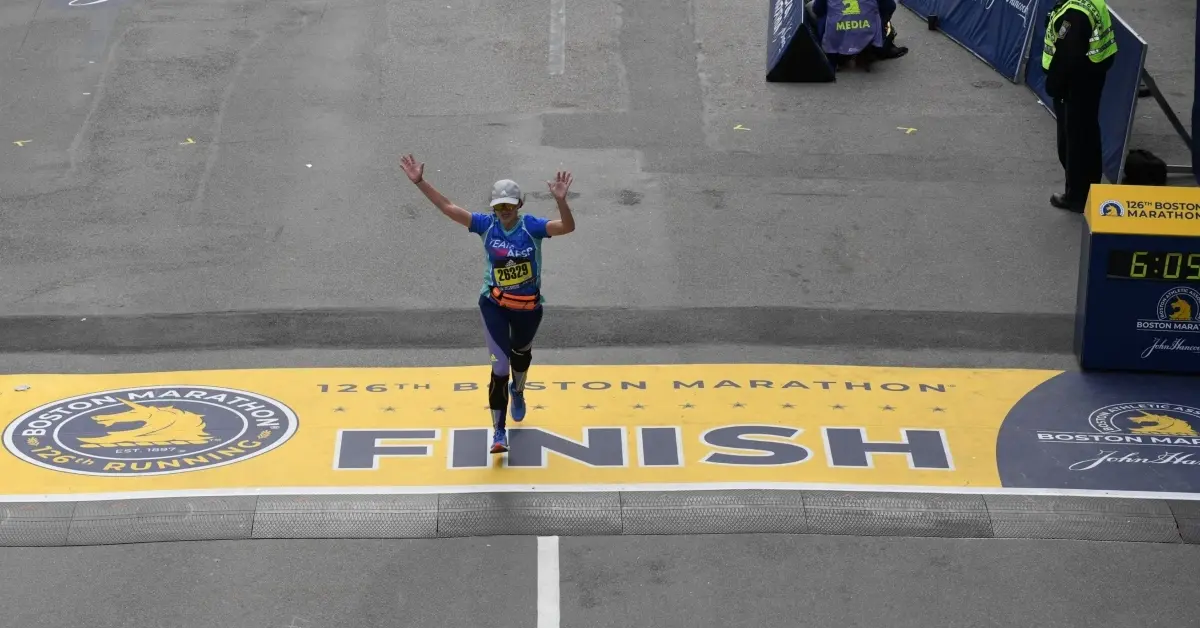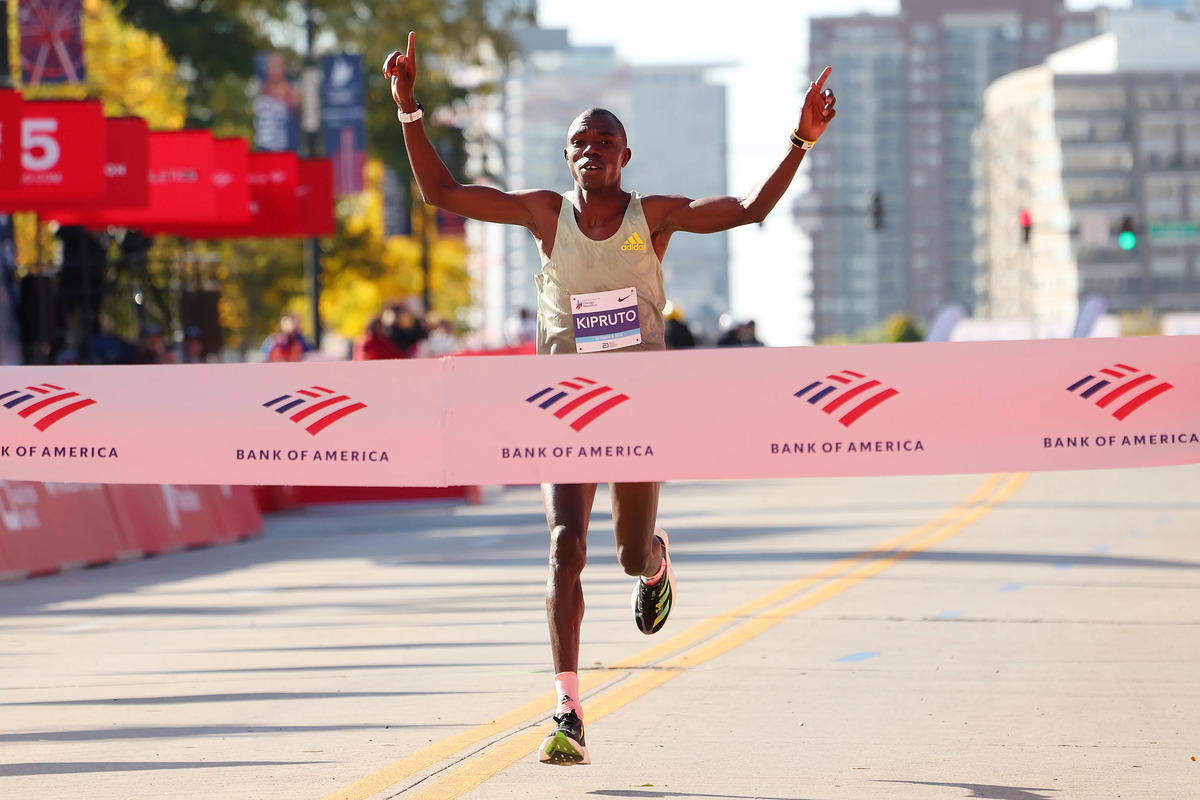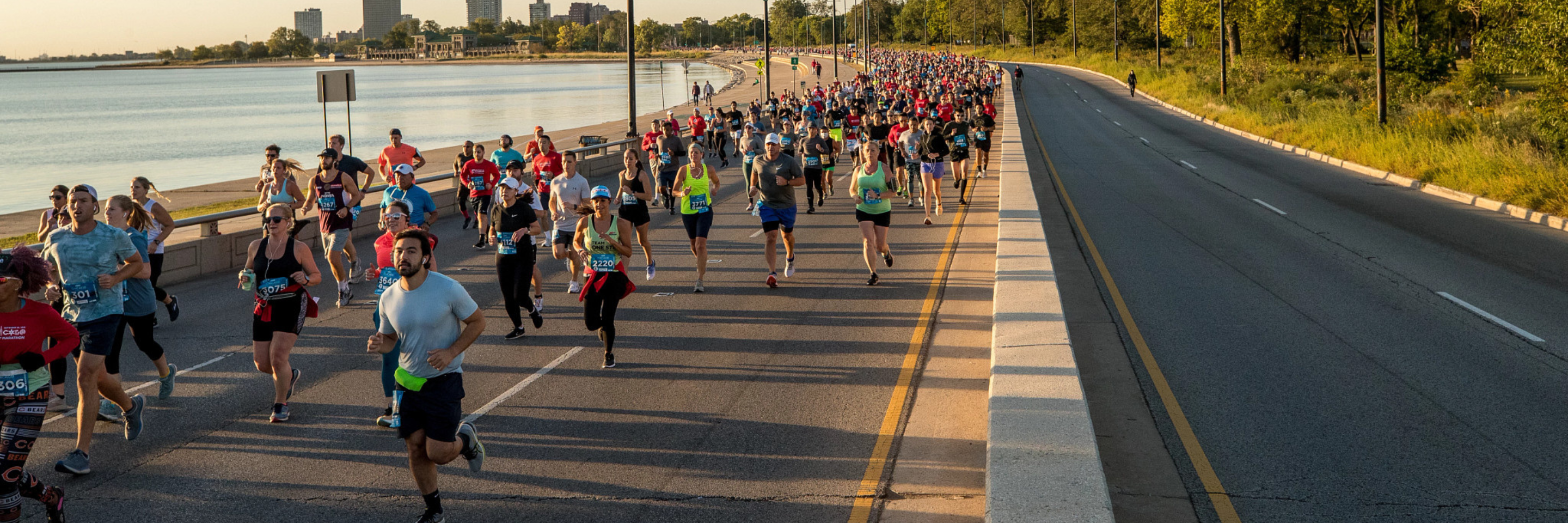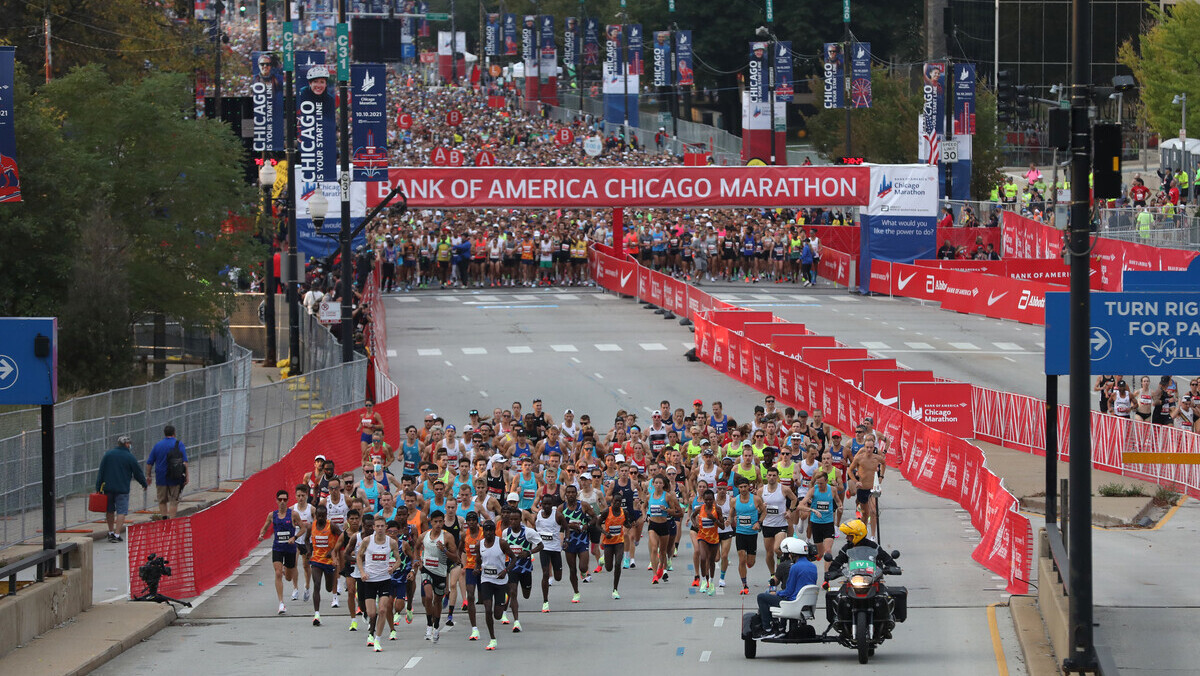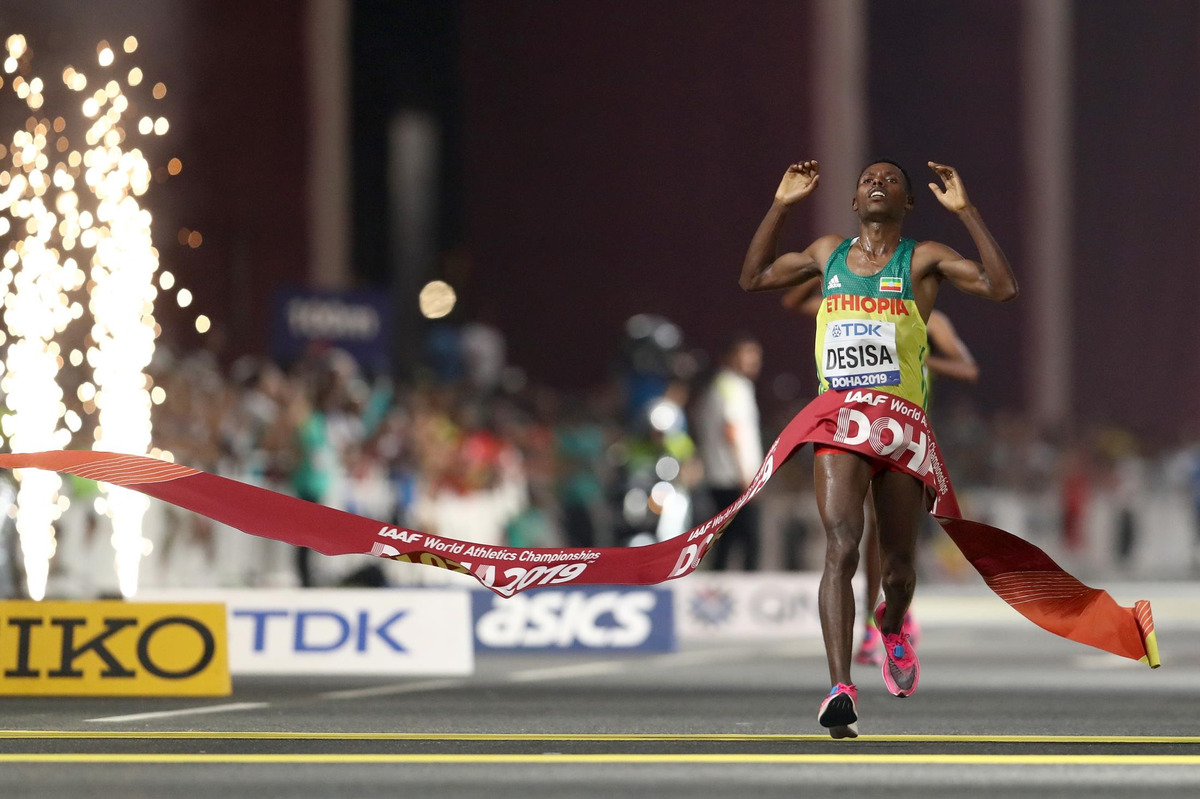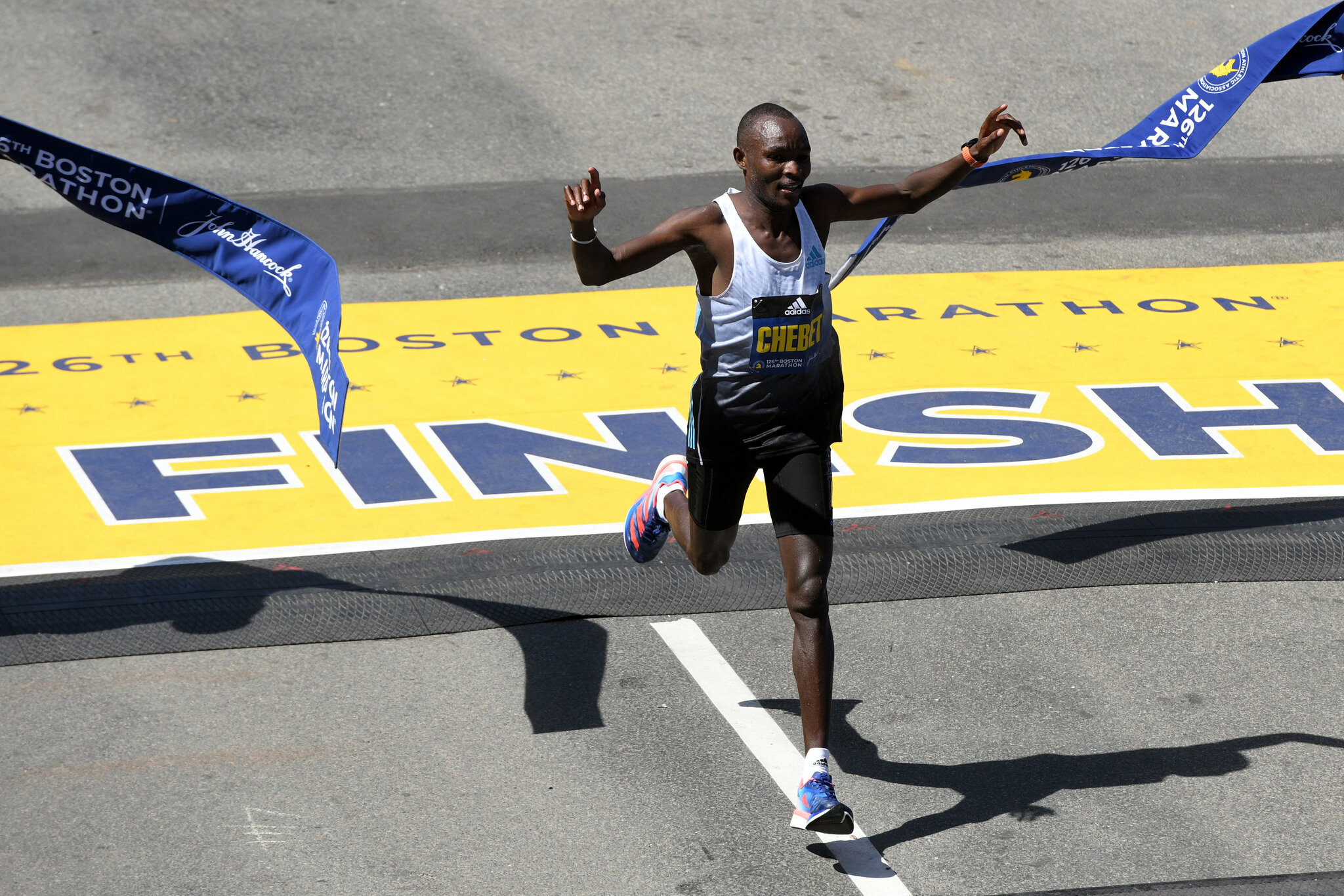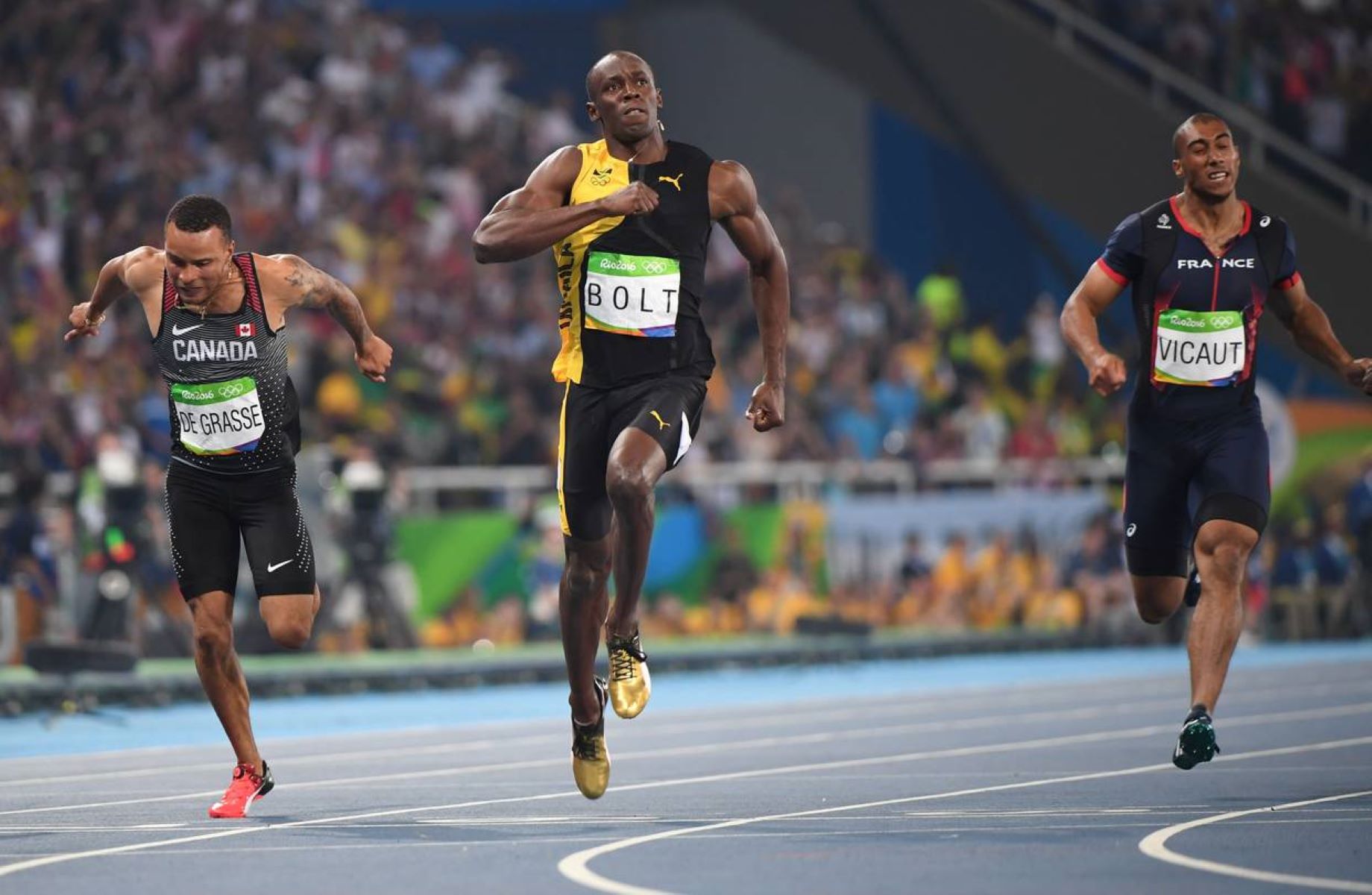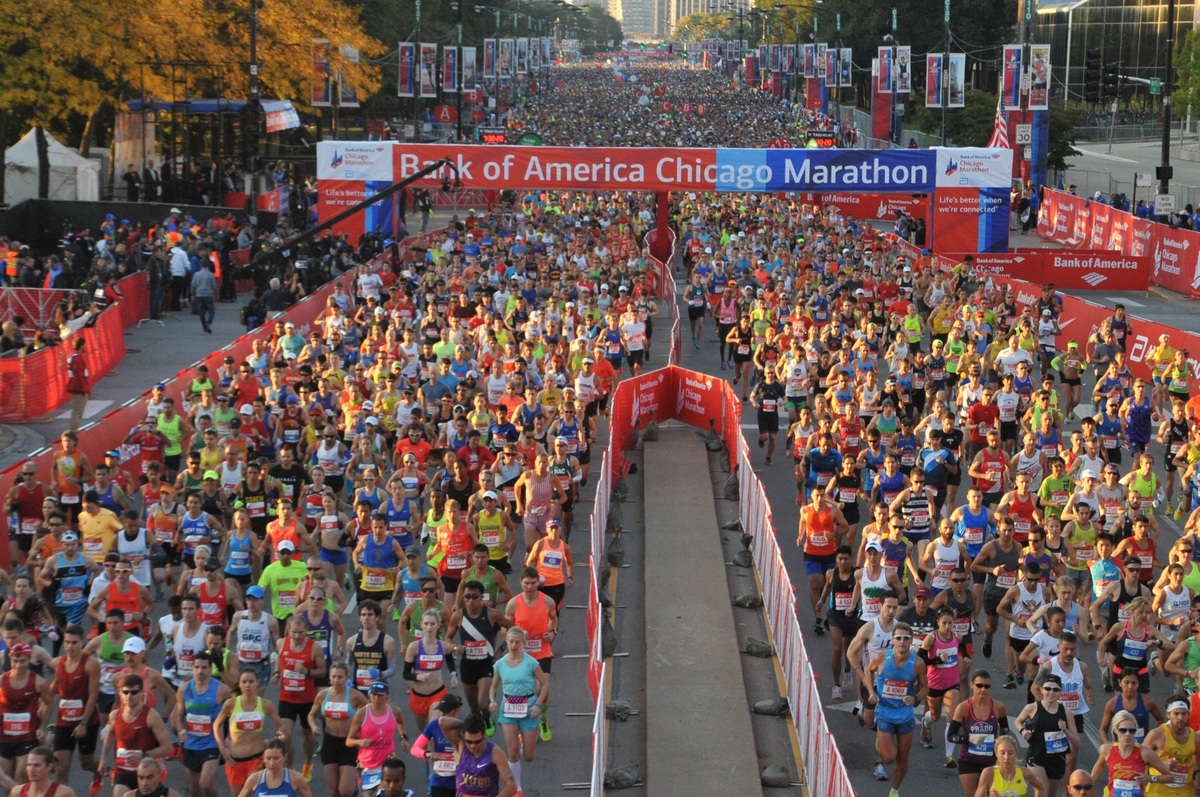

Featured
When Is The Chicago Marathon 2016
Modified: August 21, 2023
Find out the date for the Featured Chicago Marathon 2016. Don't miss this exciting event in the Windy City!
Introduction
Welcome to the exciting world of the Chicago Marathon! Every year, thousands of runners from around the globe converge upon the vibrant city of Chicago to participate in one of the most prestigious marathons in the world. Known for its fast and flat course, stunning cityscape views, and electric atmosphere, the Chicago Marathon is a bucket-list event for many endurance athletes.
Whether you are a seasoned marathon runner or a first-timer looking to test your limits, the Chicago Marathon offers a thrilling and unforgettable experience. In this article, we will delve into the history of the race, explore the course, discuss important details about the 2016 race, and provide insights on how to prepare for this epic event.
The Chicago Marathon has a rich history dating back to its inception in 1977. What started as a small local race has now grown into one of the six World Marathon Majors. Over the years, the race has attracted elite runners, celebrities, and everyday individuals with a common goal – to push their limits and cross the finish line.
One of the standout features of the Chicago Marathon is its course. Designed to showcase the beauty and iconic landmarks of the city, the route takes runners through 29 diverse neighborhoods, providing a unique opportunity to experience the cultural tapestry of Chicago. From the towering skyscrapers of the downtown area to the serene shores of Lake Michigan, runners are treated to a scenic journey that encapsulates the essence of the Windy City.
In 2016, the Chicago Marathon is scheduled to take place on October 9th. This highly anticipated event draws in a massive crowd of participants and spectators, creating an electrifying atmosphere throughout the city. Runners from all walks of life gather to challenge themselves, cheer each other on, and celebrate the triumph of the human spirit.
Participating in the Chicago Marathon requires registration and entails entry fees. Understanding the registration process and the associated costs is essential for securing your spot in the race. Additionally, proper training is crucial in preparing for this endurance event. We will provide tips on how to train effectively, ensure you are physically and mentally ready, and avoid common mistakes that could hinder your performance on race day.
Race day can be both exhilarating and nerve-wracking. Knowing what to expect during the Chicago Marathon can help ease your anxiety and allow you to fully immerse yourself in the experience. From the energy-packed start to the final stretch towards the finish line, we will guide you through the various aspects of the race, including aid stations, crowd support, and the unparalleled sense of camaraderie among participants.
Once you have completed the Chicago Marathon and crossed the finish line, the celebration and recovery begin. We will explore the post-race festivities, including the reward of receiving your medal, the opportunity to relish in your accomplishment, and how to properly recover both physically and mentally.
So, whether you are a long-time fan of the Chicago Marathon or just discovering this incredible event, join us as we dive into the thrilling journey of the 2016 Chicago Marathon and all the exhilaration it holds.
History of the Chicago Marathon
The history of the Chicago Marathon dates back to 1977 when it was first organized as a small-scale event by the Chicago Area Runners Association (CARA). With just over 4,000 participants, the inaugural race gave a glimpse of the potential that would eventually catapult it into the ranks of the world’s most iconic marathons.
Over the years, the Chicago Marathon has evolved and flourished, transforming into one of the six World Marathon Majors alongside the Boston, London, Berlin, Tokyo, and New York City Marathons. The event’s popularity can be attributed to its well-organized logistics, fast course, and the vibrant city atmosphere it offers to both runners and spectators.
One of the defining moments in the history of the Chicago Marathon occurred in 1982 when it became the first major marathon to introduce prize money for the top finishers. This move helped attract elite runners from around the world and pushed the event into the global spotlight. In subsequent years, the prize purse grew, making the race even more enticing for elite athletes.
In 1984, the Chicago Marathon made history once again as it became the first marathon to implement the computerized timing system, allowing for accurate and efficient race results. This innovation revolutionized the sport, enabling real-time tracking of runners’ progress and eliminating the need for manual timing methods.
Over the years, the Chicago Marathon has also witnessed some impressive athletic feats. In 1999, Khalid Khannouchi, a Moroccan-born American athlete, set a world record by completing the race in a remarkable time of 2 hours, 5 minutes, and 42 seconds. This achievement solidified the race’s reputation as a course for elite performances.
Beyond its athletic achievements, the Chicago Marathon has played a significant role in the community and charitable endeavors. The event has consistently raised millions of dollars for various charitable organizations, supporting causes ranging from education to healthcare to the fight against poverty.
In recent years, the Chicago Marathon has continued to draw a diverse field of participants from all corners of the globe. Runners of all abilities, from seasoned marathon veterans to first-time participants, come together to test their limits and be a part of this iconic event.
With each passing year, the Chicago Marathon has grown in size and grandeur, attracting an ever-increasing number of runners and spectators. Today, the event stands as a testament to the endurance and determination of the human spirit, and a celebration of the city of Chicago and its love for running.
The Course of the Chicago Marathon
The Chicago Marathon boasts a course that is renowned for being fast, flat, and scenic. Designed to showcase the beauty and iconic landmarks of the city, the course takes participants through 29 diverse neighborhoods, offering a truly immersive experience.
Starting in Grant Park, the course takes runners on a journey through the heart of Chicago. From the initial exhilarating moments of crossing the start line, participants make their way through the downtown area, taking in the towering skyscrapers and bustling streets.
As the race progresses, runners find themselves weaving through various neighborhoods, each with its own unique charm. From the picturesque charm of Old Town to the vibrant and culturally rich Pilsen, the course reveals the true essence of the city, showcasing its diverse communities and providing an opportunity to witness the local support and cheering spectators along the way.
One of the highlights of the Chicago Marathon is the stretch along Lake Shore Drive. With breathtaking views of Lake Michigan on one side and the city skyline on the other, runners are treated to a truly scenic and awe-inspiring segment of the race. The serene and tranquil atmosphere of the lakefront provides a welcome respite before the final push towards the finish line.
Another iconic feature of the course is the passage through the magnificent Grant Park. As runners make their way towards the finish line, surrounded by the lush greenery and monumental statues, the energy and excitement reach a crescendo. The cheers of the crowd and the sense of accomplishment fuel participants, propelling them towards the much-anticipated finish line.
The Chicago Marathon course is not only visually appealing but also meticulously designed to be fast and conducive to personal records. The combination of its flat terrain and the absence of steep inclines, along with the cool weather conditions typically experienced in October, make it an ideal marathon for setting new personal bests.
Throughout the course, aid stations are strategically placed, supplying water, electrolyte drinks, and energy gels to keep runners hydrated and fueled. Medical support and security personnel are also stationed along the route, ensuring the safety and well-being of participants.
Overall, the Chicago Marathon course offers a truly unique and memorable experience. From the iconic landmarks to the vibrant neighborhoods, every mile is packed with excitement, support, and a genuine sense of community. Whether you are aiming for a personal best or simply looking to soak in the sights and sounds of the Windy City, the Chicago Marathon course promises an unforgettable journey.
2016 Chicago Marathon Date and Time
The highly anticipated 2016 Chicago Marathon is scheduled to take place on October 9th, offering participants the opportunity to experience the excitement and challenges of this iconic race. Mark your calendars and prepare yourself for a memorable journey through the streets of Chicago.
The race will kick off in the early morning, typically around 7:30 AM Central Time. The specific start time may vary slightly depending on the wave and corral assigned to each participant. It is important to arrive early to allow ample time for check-in, gear drop-off, and warming up.
The early start time not only allows for cooler weather conditions but also sets the stage for an energizing atmosphere as crowds gather to cheer on the runners. Bracing the crisp morning air, the participants embark on their 26.2-mile journey, fueled by anticipation and adrenaline.
The 2016 Chicago Marathon follows a well-organized and efficient wave start system, with runners grouped into various waves and corrals based on their anticipated finish times. This ensures a smoother flow of runners and allows for a more enjoyable and efficient race experience.
Participants are advised to review the event information and plan their arrival accordingly to avoid any last-minute rush and ensure a stress-free start to the race. By arriving early, runners have ample time to settle into the atmosphere, warm up, and mentally prepare for the challenge that lies ahead.
Throughout the day, the course remains vibrant and alive with spectators lining the streets, encouraging and cheering on participants. The support from the Chicago community and the energy of fellow runners create an electrifying environment that motivates and inspires every step of the way.
The race culminates with the finish line located in Grant Park, serving as a beacon of accomplishment for all participants. As the clock ticks, runners push their limits, crossing the finish line and achieving a personal victory that will be etched in their memories forever.
Upon crossing the finish line, participants are rewarded with a well-deserved medal, symbolizing their determination and perseverance throughout the race. Whether it is your first marathon or another milestone in your running journey, this momentous occasion is one to be cherished and celebrated.
After completing the race, participants can look forward to the post-race festivities, including a celebration in Grant Park. Here, runners can reunite with friends and family, share stories of their race-day experiences, and revel in the sense of accomplishment that comes with conquering the Chicago Marathon.
So mark your calendars and prepare yourself for the 2016 Chicago Marathon, an event that promises an unforgettable experience. From the early morning start to the triumphant finish, this race is an opportunity to test your limits, embrace the vibrant atmosphere of Chicago, and create memories that will last a lifetime.
Registration and Entry Fees
To be a part of the exhilarating Chicago Marathon, participants must register and pay the associated entry fees. The registration process is straightforward but requires careful planning to secure your spot in this highly sought-after event.
Registration for the Chicago Marathon typically opens several months before the race day and is conducted on a first-come, first-served basis. It is essential to keep an eye on the official race website or sign up for email notifications to ensure you don’t miss the registration window.
Entry fees for the Chicago Marathon vary depending on several factors, including residency, registration period, and participation type. Residents of the United States usually have a separate registration process and may benefit from a lower entry fee compared to international participants.
Early registration typically offers reduced entry fees, providing an incentive to sign up as soon as possible. However, even with early registration, it is important to plan ahead as the race reaches its participant capacity quickly, and spots can fill up within days or even hours.
The entry fee covers various elements, including the race experience itself, detailed participant information, a personalized bib number, and access to personalized training plans and other resources on the official race website. It also contributes to the organization of the event, ensuring a seamless and enjoyable experience for all participants.
In addition to the standard entry fee, participants also have the option to raise money for various charitable organizations through the official charity program. This allows participants to give back to the community while pursuing their marathon goals.
Once registered, it is crucial to familiarize yourself with the race protocols, such as the bib pickup process, gear check requirements, and any additional guidelines issued by the race organizers. Being well-informed will help you to navigate the logistics smoothly and make the most of your race experience.
If, for any reason, a registered participant is unable to attend the race, deferral and transfer options may be available. These options typically have specific deadlines and requirements, so it is important to review and understand the deferral policy outlined by the race organizers.
To summarize, registering for the Chicago Marathon requires timely action due to the event’s popularity. Keeping an eye on registration opening dates and planning your entry accordingly is essential. Be mindful of the entry fees and consider the various options available, including the official charity program, to enhance your race experience and support meaningful causes. By being well-informed and prepared, you can secure your spot in this incredible event that brings together runners from around the world for an unforgettable marathon journey.
Training for the Chicago Marathon
Training for the Chicago Marathon is a crucial aspect of preparing yourself for the physical and mental demands of completing the 26.2-mile race. A well-structured and consistent training plan will help you build endurance, improve your running performance, and minimize the risk of injury.
Before embarking on your training journey, it is important to assess your current fitness level and set realistic goals. Whether you are a seasoned runner or a first-time marathoner, tailoring your training plan to your abilities will help you progress steadily and avoid overexertion.
The training period for the Chicago Marathon typically spans several months. It is recommended to follow a gradual progression, increasing your weekly mileage, and incorporating different types of runs, such as long runs, speed work, and recovery runs.
Long runs play a crucial role in marathon training, as they simulate the demands of running the full race distance. Gradually increasing the length of your long runs will help build your endurance and mental resilience. It is also important to practice proper fueling and hydration strategies during these longer runs to simulate race-day conditions.
Speed work is another essential component of marathon training. Interval training, tempo runs, and hill repeats help improve your running efficiency and increase your overall speed. These workouts not only enhance your physical performance but also boost your confidence and mental fortitude.
Recovery runs, on the other hand, are shorter, slower-paced runs designed to promote active recovery and aid in muscle repair. Incorporating regular recovery runs into your training plan will help prevent overtraining and reduce the risk of injuries.
In addition to the running aspect, cross-training activities such as swimming, cycling, or strength training can provide valuable benefits. These activities help improve overall fitness, build strength, and reduce the risk of overuse injuries. Incorporating cross-training sessions in your training plan can also add variety and break up the monotony of constant running.
Listening to your body and incorporating rest days into your training plan is just as important as the workouts themselves. Rest allows your body to recover and adapt to the training stimulus, helping you avoid burnout and achieve optimal performance on race day.
Mental preparation is also crucial for marathon training. Visualizing success, setting realistic expectations, and developing coping strategies for moments of fatigue or self-doubt can make a significant difference in your overall performance. Surrounding yourself with a support network, whether it be fellow runners, friends, or family, can provide motivation and encouragement throughout your training journey.
Finally, as you approach race day, it is important to taper your training by reducing mileage and intensity to allow your body to recover fully and ensure peak performance. The taper period typically lasts a few weeks, allowing your body to store energy and be fully rested on race day.
In summary, training for the Chicago Marathon requires dedication, patience, and careful planning. Following a structured training plan, incorporating various types of runs, cross-training activities, and allowing for adequate rest and recovery will help you build the necessary endurance and mental strength to tackle the 26.2-mile journey. Remember, each training session brings you one step closer to achieving your marathon goal.
Preparing for Race Day
As race day approaches, it’s important to take the necessary steps to ensure you are fully prepared both physically and mentally for the Chicago Marathon. Here are some essential tips to help you make the most of this momentous occasion.
First and foremost, familiarize yourself with the race logistics and plan your transportation to the start line in advance. Understand the designated transportation options and pick-up locations, as well as any road closures or restrictions that may affect your journey. Arriving early on race day will provide ample time to get settled, warm up, and mentally prepare for the race ahead.
Packing the night before is essential to avoid any last-minute stress or forgotten items. Lay out your race gear, including your running shoes, clothes, and any required accessories such as a GPS watch or a fuel belt. Plan for different weather conditions by packing layers or lightweight clothing depending on the forecast.
Proper nutrition and hydration leading up to the race are crucial for optimal performance. In the days leading up to the marathon, focus on consuming a balanced diet rich in carbohydrates to ensure your glycogen stores are fully replenished. Hydration should also be a priority, so be sure to drink plenty of water in the days leading up to the race.
On race day, start your morning with a light and easily digestible meal. Aim to eat at least two to three hours before the race to allow ample time for digestion. A combination of carbohydrates and a small amount of protein can provide the necessary energy to sustain you throughout the marathon. Experiment with different foods during your training to determine what works best for you.
Before heading to the start line, perform a dynamic warm-up routine to get your muscles primed and ready for the race. This can include light jogging, dynamic stretches, and strides to activate your muscles and improve your range of motion. A proper warm-up can help prevent injuries and improve your overall performance.
During the race, pacing is key. Start conservatively and gradually increase your effort as the race progresses. Stick to your pre-determined race pace and avoid getting caught up in the excitement and adrenaline of the crowd. Following your race plan will help you avoid hitting the dreaded “wall” and enable you to finish strong.
Stay hydrated throughout the race by taking advantage of the aid stations along the course. Practice your hydration plan during your training runs, and consider carrying your own fluids if needed. It’s important to strike a balance between drinking enough fluids to stay hydrated and avoiding overhydration, which can lead to discomfort or even hyponatremia.
Mental preparation is just as important as physical preparation. Stay positive and focus on your training and the hard work you’ve put in leading up to the race. Visualize yourself crossing the finish line and embrace a positive mindset throughout the entirety of the marathon. Remember that the crowd support and the incredible atmosphere of the Chicago Marathon will provide an extra boost of motivation along the way.
Lastly, celebrate your accomplishment. The Chicago Marathon is an incredible achievement, and crossing the finish line is a moment to be proud of. Embrace the post-race festivities, cherish your medal, and take the time to recover both physically and mentally. Reflect on your journey, the obstacles you overcame, and the satisfaction of achieving your marathon goal.
So, prepare yourself physically, mentally, and logistically for race day. Follow these tips, trust in your training, embrace the experience, and enjoy every step of your Chicago Marathon journey.
What to Expect During the Chicago Marathon
The Chicago Marathon is an exhilarating and unforgettable experience, filled with vibrant energy, incredible support, and a sense of camaraderie among the participants. As you embark on this 26.2-mile journey, here’s what you can expect during the Chicago Marathon.
From the moment you step foot at the start line, you’ll be immersed in a sea of excitement. The cheers and encouragement from fellow runners, families, and spectators create an electrifying atmosphere that will fuel your determination and motivate you throughout the race.
The route itself is a carefully planned journey through the heart of Chicago, showcasing the city’s iconic landmarks and diverse neighborhoods. From the start in Grant Park to the endless spectators lined along the streets, every mile offers a new and captivating experience.
You can expect enthusiastic support from the Chicago community along the entire course. The locals come out in full force, cheering, clapping, and holding signs to motivate and uplift the runners. The energy and encouragement they provide are truly remarkable and will push you to keep going, even when the miles get tough.
The aid stations are strategically placed along the route, offering hydration, nutrition, and medical assistance if needed. Volunteers at these stations provide much-needed support, enthusiastically handing out cups of water and sports drinks to keep you hydrated and fueled. Take advantage of these stations to replenish your energy and stay on course.
The Chicago Marathon is also known for its impeccable organization. Race officials, volunteers, and law enforcement work tirelessly to ensure your safety and a smooth race experience. You can expect professional medical teams stationed throughout the course, ready to assist with any medical emergencies or injuries that may occur.
As you approach the halfway mark, known as the “Beat the Bridge” point, you’ll experience an adrenaline rush knowing that you’ve reached the midway point of the race. This serves as a pivotal moment, signaling that you are on track to complete the full marathon distance. Push through any fatigue and celebrate this milestone.
The support doesn’t end on the streets. Spectators and volunteers will often provide additional motivation by offering high-fives, candy, or small snacks along the course. Their genuine enthusiasm and kindness create an uplifting and memorable experience for every participant.
As you near the final stretch, you’ll be greeted by the inspiring view of the Chicago skyline. The excitement builds, and the cheers of the crowd intensify as you approach the finish line. Dig deep, summon your inner strength, and savor the moment as you cross the finish line, accomplishing a marathon feat that will stay with you for a lifetime.
After completing the race, participants are treated to post-race celebratory festivities. Reunite with family, friends, and fellow runners in Grant Park to share stories and bask in the sense of achievement. Take time to stretch, refuel with nutritious snacks, and enjoy the post-race atmosphere of celebration and accomplishment.
Overall, the Chicago Marathon offers an experience like no other. Expect an electrifying atmosphere, unwavering community support, and a course that showcases the uniqueness of the Windy City. Embrace the challenges, draw on the enthusiasm of the crowd, and let the Chicago Marathon be an unforgettable journey that showcases your strength and perseverance.
Post-Race Celebration and Recovery
Crossing the finish line of the Chicago Marathon is a monumental achievement, and it’s time to celebrate your accomplishment. After the race, indulge in a well-deserved post-race celebration and focus on your recovery to ensure a smooth transition back to your normal routine.
When you cross the finish line, the overwhelming sense of accomplishment and joy will wash over you. Take a moment to savor this milestone and revel in your success. Embrace the cheers and support of the spectators and fellow runners, and allow yourself to bask in the glory of completing the 26.2-mile journey.
Once you’ve collected your finisher’s medal, take some time to relax and recover in the designated post-race area. Here, you can reunite with friends and family and share your race-day experiences. Reflect on the hard work, dedication, and perseverance that brought you to this point.
A crucial aspect of post-race recovery is replenishing your body with proper nutrition. Indulge in a balanced meal that includes proteins, carbohydrates, and healthy fats to aid in muscle repair and glycogen replenishment. Nutrition plays a vital role in supporting your body’s recovery process, so be mindful of providing it with the nutrients it needs.
Hydration is also key after completing the marathon. Replace any fluids you may have lost during the race by sipping on water or electrolyte-replenishing drinks. Be aware of your body’s cues for thirst and ensure you are adequately hydrated throughout the day.
Giving your body time to rest and recover is essential in the post-race period. Listen to your body’s signals and allow yourself a few days of reduced activity to promote muscle repair and minimize the risk of injury. Engaging in light stretching or low-impact activities like walking or swimming can aid in the recovery process.
Active recovery techniques such as foam rolling, massage, or gentle yoga can also be helpful in easing muscle soreness and promoting blood flow to aid in recovery. Take advantage of these techniques to help your body bounce back more quickly.
Mentally, it’s important to embrace the post-race period as a time for reflection and rejuvenation. Allow yourself to process the emotions that may arise after completing such a significant personal achievement. Take pride in your accomplishment and use it as motivation for future goals.
Connecting with fellow runners who have shared the Chicago Marathon experience can be a great way to celebrate and debrief. Join online forums or local running groups to share your stories, gain insights, and build new connections. The running community is filled with individuals who understand the triumphs and challenges of marathon racing.
As you recover, remember to be gentle with yourself. It’s common to experience post-race blues or a sense of emptiness after completing a marathon. Allow yourself time to process these emotions and establish new goals to maintain your motivation and passion for running.
Lastly, consider treating yourself to a post-race reward or gift. Whether it’s a massage, a new running gadget, or simply a day of relaxation, acknowledge your accomplishment and pamper yourself as a way to recharge and refuel.
The post-race celebration and recovery period is a vital part of the marathon experience. It allows you to soak in the achievement, take care of your body, and recharge both physically and emotionally. Embrace the journey, revel in your accomplishments, and use this time as a stepping stone to future running endeavors.
Conclusion
The Chicago Marathon is an extraordinary event that combines the thrill of running with the vibrant spirit of the city. From its rich history to the breathtaking course, the Chicago Marathon offers a remarkable experience for all participants.
As runners embark on the 26.2-mile journey, they are met with the support and enthusiasm of the Chicago community. The iconic landmarks, diverse neighborhoods, and incredible crowd energy create an unforgettable atmosphere that propels participants toward the finish line.
Proper preparation is crucial for a successful Chicago Marathon experience. From carefully planning your training to understanding the logistics of race day, being well-prepared ensures you are ready for the physical and mental challenges that lie ahead.
Achieving your goal of finishing the Chicago Marathon deserves celebration. Crossing the finish line is a testament to your determination, perseverance, and dedication to your training. Take time to reflect on your accomplishment and bask in the joy of completing this incredible feat.
But the Chicago Marathon is more than just a race. It brings people together, fostering a sense of community and camaraderie among participants from around the world. The support and encouragement from fellow runners, volunteers, and spectators create an electric and unforgettable experience.
As you recover and reflect on your journey, remember to cherish the memories, the friendships made, and the lessons learned along the way. The Chicago Marathon not only tests your physical limits but also teaches you about resilience, determination, and the ability to push past your comfort zone.
Whether you’re a first-time marathoner or a seasoned runner, the Chicago Marathon offers an opportunity to challenge yourself, explore the vibrant city, and create memories that will last a lifetime. Embrace the journey, enjoy every step, and let the Chicago Marathon be a testament to your strength and indomitable spirit.
So lace up your running shoes, embrace the energy of the city, and let the Chicago Marathon take you on an unforgettable marathon journey filled with triumph, joy, and a sense of accomplishment that will stay with you forever.
